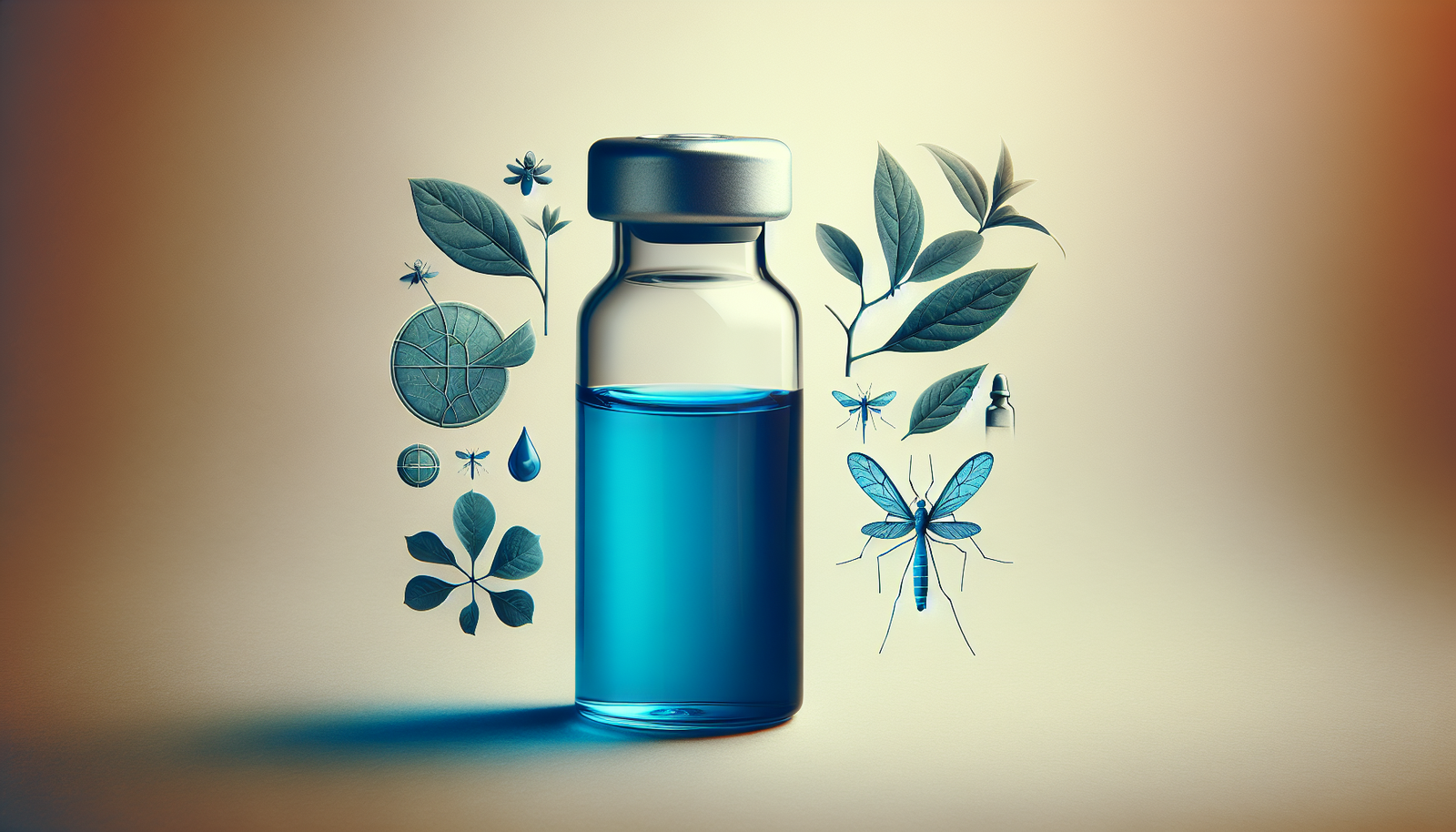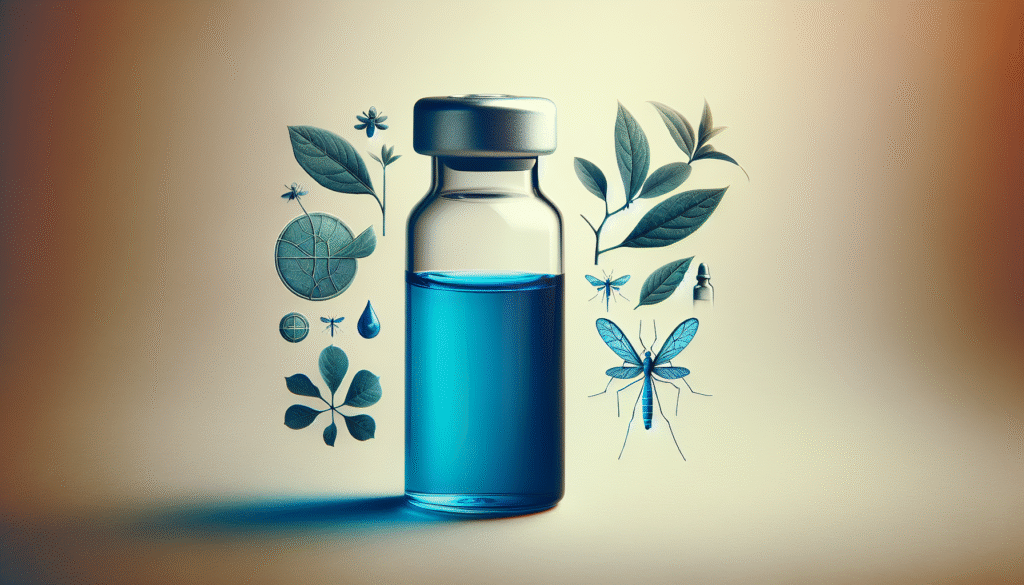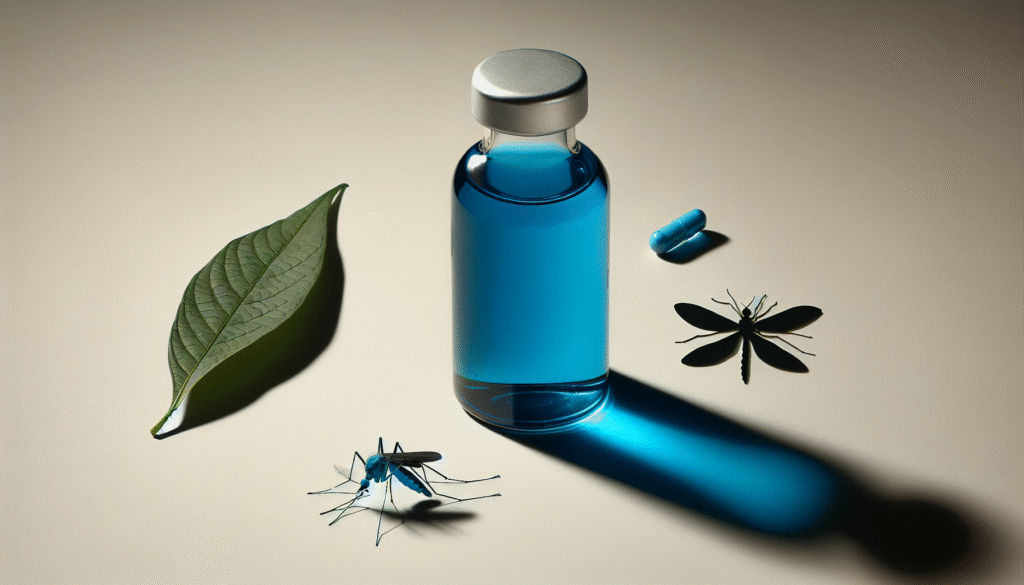
Have you ever wondered about the contributions of unconventional therapeutic agents in the fight against diseases like malaria? The quest for effective treatments has led researchers to explore a variety of compounds, one of which is methylene blue. This article will unravel the significance of methylene blue, its mechanisms of action, and its potential as a treatment for malaria.

Understanding Methylene Blue
Methylene blue is a synthetic compound with a long history of medical use. Originally developed as a dye in the mid-19th century, it has since gained recognition for its various therapeutic effects. This compound is notable not only for its role in treating methemoglobinemia but also for its emerging potential in anti-parasitic therapies.
Historical Context
Methylene blue was first synthesized in 1876, and by the early 20th century, it was utilized in clinical settings. Initially, its application was primarily for dyeing textiles, but researchers quickly recognized its medicinal properties. As knowledge about the compound grew, its use in hematological conditions and its antimicrobial effects came to light, paving the way for further research.
Mechanisms of Action
Understanding how methylene blue functions requires a look into its complex interactions at the cellular level. The compound can affect various biological processes through several mechanisms.
Reduction and Oxidation
At its core, methylene blue operates as a redox agent. It can easily exist in both oxidized and reduced forms. In the oxidized state, it serves as a potent electron acceptor, which can help normalize oxidative stress in cells—critical in diseases like malaria, where oxidative imbalances can cause significant damage.
Inhibition of Parasite Growth
Several studies have indicated that methylene blue can inhibit the growth of the Plasmodium species, the parasite responsible for malaria. By disrupting mitochondrial functions and affecting the production of ATP in these parasites, methylene blue demonstrates significant anti-malarial activity.
Antimicrobial Properties
Aside from its reactivity with Plasmodium species, methylene blue exhibits broad-spectrum antimicrobial properties. It has shown effectiveness against various bacterial strains, viral particles, and even certain fungal species. This versatility makes methylene blue attractive not only in the context of malaria but also in the broader field of infectious diseases.
Methylene Blue as an Antimalarial Agent
Despite its historical use, methylene blue has not been a frontline treatment for malaria. However, clinical trials and studies have begun to demonstrate its potential efficacy.
Clinical Trials
Recent trials focusing on methylene blue as an antimalarial have yielded promising results. In these studies, researchers have sought to assess the efficacy of methylene blue, especially in cases resistant to standard treatments.
| Study Year | Research Focus | Outcome | Notes |
|---|---|---|---|
| 2016 | Methylene Blue + Lumefantrine | Significant reduction in parasite load | Combination therapy showed considerable results. |
| 2018 | Single Agent Study | Effective against P. falciparum | Highlighted need for further exploration in real-world settings. |
| 2020 | Resistance Cases | Showed promise in resistant strains | Potentially valuable in multidrug-resistant cases. |
Comparison with Current Treatments
Current first-line treatments for malaria often include artemisinin-based combination therapies (ACTs). Comparing the efficacy of methylene blue with these established guidelines provides valuable insight into its practicality as an alternative treatment.
| Treatment Type | Benefits | Limitations |
|---|---|---|
| Methylene Blue | Effective against resistant strains, rapid action | Limited data on long-term effects |
| ACTs | High efficacy, well-studied | Resistance is emerging; treatment failures reported |
Resistance and the Future of Methylene Blue
One pressing issue in malaria treatment is drug resistance. While resistance to well-established therapies like ACTs is growing, the introduction of methylene blue and its unique mechanism may provide a necessary alternative.
Addressing Drug Resistance
Resistance to traditional antimalarial medications poses significant challenges to public health. The unique properties of methylene blue—particularly its mechanism of action—may mitigate this issue. Methylene blue’s ability to inhibit mitochondrial function in parasites suggests a different pathway that could outmaneuver potential resistance mechanisms.
Future Research Directions
Ongoing research endeavors focus on optimizing methylene blue usage in malaria treatment regimens. This includes investigating combination therapies, tailoring doses, and exploring various administration routes to maximize therapeutic efficacy while minimizing side effects.
Potential Combinations
The prospects for combination therapies with methylene blue are vast. Pairing it with established antimalarials such as artemisinin could enhance treatment efficacy and minimize the risk of resistance development.
Side Effects and Considerations
While methylene blue shows promise, it is essential to consider the potential side effects associated with its administration.
Common Side Effects
Patients receiving methylene blue may experience various side effects, such as:
- Nausea and Vomiting: Gastrointestinal disturbances are common but usually transient.
- Skin Discoloration: Patients might notice a blue or green hue to their urine or skin, a harmless yet notable effect.
- Serotonin Syndrome Risk: Methylene blue can interact with certain medications, leading to increased serotonin levels, necessitating careful patient history assessments.
Monitoring and Precautions
Healthcare providers must monitor patients for either adverse reactions or therapeutic failures. While methylene blue is generally well-tolerated, awareness of drug interactions and contraindications is crucial.

Case Studies and Real-World Implications
Reviewing specific cases wherein methylene blue has been employed in malaria treatment aids in assessing its real-world application.
Successful Outcomes
-
Case Study A: A 40-year-old male traveling to an endemic region developed malaria resistant to conventional therapy. Upon receiving methylene blue, his symptoms improved significantly within 48 hours, as reflected in follow-up blood smears.
-
Case Study B: A cluster of cases in a rural health clinic showed high rates of drug-resistant malaria. Following a trial period using methylene blue as a treatment alternative, the clinic reported a reduction in malaria incidence after implementing a methylene blue-based protocol.
Challenges Faced
Despite success stories, widespread adoption of methylene blue faces hurdles such as regulatory approval, availability, and cost factors. Ensuring equitable access in endemic regions remains a challenge that health authorities must address.
Conclusion
The exploration of methylene blue’s role in treating malaria provides exciting insight into potential novel therapies amidst growing resistance to pre-existing treatments. While more extensive and long-term studies are needed, its mechanism, effectiveness as a standalone agent, and potential in combination therapies mark it as a beacon of hope in the battle against malaria.
As you ponder the implications of methylene blue’s role in healthcare, consider not only its immediate benefits but also the broader impact on public health and disease management. The fight against malaria is far from over, but the continued investigation of agents like methylene blue may bring us closer to effective solutions in this enduring struggle.